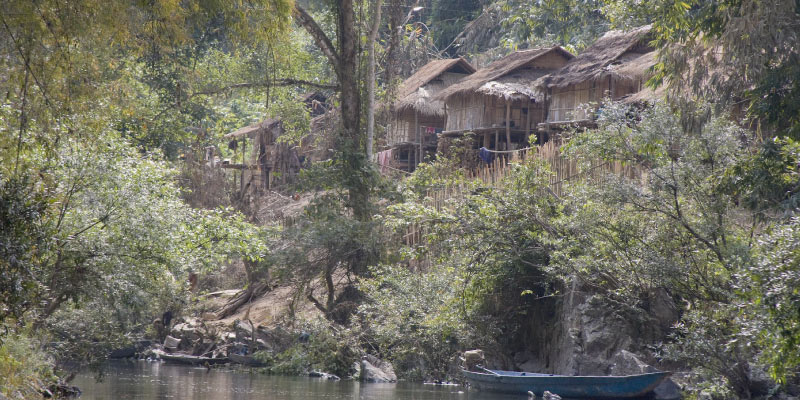
In Nam Et-Phou Louey National Park in northern Laos, a boat of tourists quietly floats down the Nam Nern River. The sun went down hours ago, desaturating the forest until it reached total blackness. At the bow of the long-tail boat, a local guide expertly navigates the dark waters. A rustle. A hush. The boat stills as the guide flips on a spotlight. The tourists are mere feet away from a sambar deer, one of Laos’ more elusive large mammals. After several moments in silent awe, the guide paddles on, seeing whom else they can find in the shadows.
Across Southeast Asia, and especially in Laos, the illegal hunting and trading of wildlife has been an increasingly devastating problem. These activities pose dire threats to biodiversity and conservation — but to not hunt and trade, for locals facing income insecurity, poses equally grave circumstances. What can you do to protect both the hunter and the hunted? Arlyne Johnson, who arrived in Laos in 1998 through the Wildlife Conservation Society, helped uncover a solution.
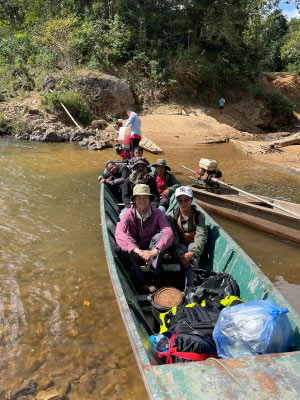
A wildlife biologist by training, Johnson had recently earned her master’s degree from the Nelson Institute’s conservation biology and sustainable development program (now the environmental conservation professional master’s program) when she arrived in Laos to work as the codirector of the Wildlife Conservation Society’s country program. She fell in love with the country and stayed for 13 years, working with and training scientists, conservationists, and government partners. Around 2006, Johnson and her team were tasked with finding ways to boost tiger conservation in the Nam Et-Phou Louey National Park. The team’s research had shown that illegal wildlife trade was causing the park’s tiger population to wane. But from her studies at the Nelson Institute, she knew that there were socioeconomic drivers at play, too. If villagers relied on income from killing animals, could the park find an alternative — a way to directly pay for keeping animals alive?
“We decided to test an ecotourism strategy,” she says, “which would work with the communities in the areas where the hunting was occurring, to have tourists do a night safari.” The concept was relatively simple: with training from the park, villagers would run the excursions, doing everything from driving boats, leading tours, cooking meals, and making repairs. At the end of each safari, the tourists would pay for their experience based on the number of animals they saw. The rarer the animal, the higher the cost. The money went into a fund, which was divided among the villages that participated.
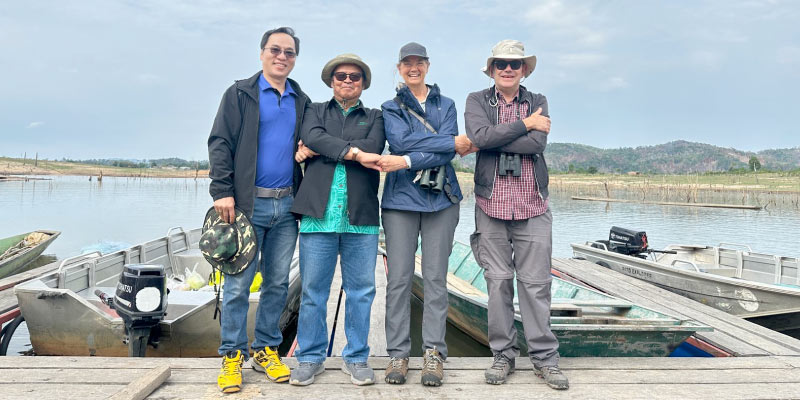
The implementation, however, required the team’s expertise in not only conservation, but also change management, community building, and communication skills. Fortunately, just a few years before starting this project, Johnson had rounded out her Nelson education with a PhD in land resources, giving her the perfect background to help make this happen. “Our national park team signed a contract with every community,” Johnson explains. “Each family was involved and agreed” — all 859 of them. The contract outlined the fee-for-sighting process; agreed that if any villagers were caught hunting or trading wildlife, the entire village would get less money; and stated that employment would be terminated if the contract was violated. In just four years, hunting violations dropped, and the village fund surged.
“We weren’t successful in conserving the tigers,” says Johnson, “but we were successful in changing behavior. The prey species — a lot of threatened ungulates like sambar deer and muntjacs — were also declining in this area. We saw that, as a result of our work, those prey populations stabilized and sightings of other carnivore species began to increase.”
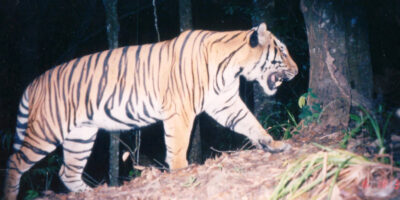
When her work in Laos ended (though the program’s continues today), Johnson moved back to the United States and joined Foundations of Success (FOS) as a senior program officer. A nonprofit, FOS works across the globe helping conservation groups “design, manage, and monitor their conservation programs, in a framework that helps them evaluate what’s working, what’s not, and why,” she explains. “We like to say, ‘improving the practice of conservation.’ ” Though she was now based stateside, her work continued to support teams in Nepal, Indonesia, Vietnam, and a familiar stomping ground, Papua New Guinea. That’s where, years earlier, Johnson completed her PhD research in the New Guinea Highlands. Part of her project included testing the first iterations of the now widely adopted Conservation Standards, an “open-source, strategic process [that] helps conservation teams achieve lasting impact.”
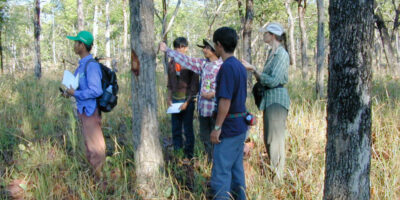
As Johnson was establishing herself with FOS, she also reconnected with colleagues back at the Nelson Institute. She learned that changes were afoot for her master’s program — the transition into today’s environmental conservation (EC) professional master’s program. When asked if she’d be willing to advise the new program’s creation, she jumped at the chance; after working for decades in the field, she knew exactly what type of real-world training graduate students would need to be successful. Perhaps equally excited were her colleagues at FOS, who saw a new opportunity to unite their critical work with academic curricula. “The work at Nelson became really a flagship,” says Johnson.
She became an adjunct professor, teaching the EC program’s ENVIR ST 972: Conservation Planning. Using FOS expertise and the Conservation Standards (that she’d serendipitously helped test in the nineties), students in her class design conservation plans for real-world partners in Wisconsin and around the world. This fall, her students are designing a conservation restoration project with the City of Waupaca, “but at the same time, we’re also working with a wildlife conservation project in Cambodia,” she says. Through the Sauk City-based International Crane Foundation, students are working on a project focused on the sarus crane, the world’s tallest flying bird. “I love it because my students can see [that] you can apply these principles in Waupaca, and you can apply them in Cambodia … I think it’s the first time they can really see, ‘Oh, there’s a common framework we can apply to wherever we work.’ ”
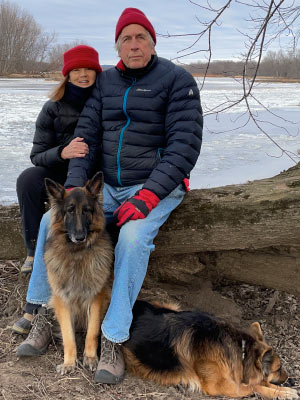
One often thinks about conservation in relation to a specific habitat or species. But when it comes to the arc of Johnson’s career, perhaps her greatest achievements have been in protecting and preserving the field of conservation itself. “Where my passion lies is [in] building the next generation of conservation practitioners,” she says, so much so that both she and her husband, fellow conservationist Mike Hedemark, want to ensure for decades to come. In planning for their estate, they created the Wiel Abus Fund (which means wildlife in Melanesian Pidgin English) to support conservationists from developing countries in attending the Nelson Institute. “For me, that’s kind of been the reward of life on this planet,” she says. “[Helping] governments and organizations implement conservation programs and train their next generation of people … that’s been probably one of the most important contributions I can make in this field.”
Many miles and memories have happened since Johnson called Laos home. There, she and Hedemark lived along the Mekong River in a house that welcomed the sounds of the tropics and their neighboring birds year-round. After 25 years overseas, when the pair found their new home in Wisconsin, they did so along the Wisconsin River, a different yet familiar backdrop. Hedemark installed a microphone in their backyard and connected it to a speaker system throughout the house. As Johnson overlooks the lush, green waterway and the sounds of catbirds, robins, and mourning doves pipe into her office, for a moment, it’s as if she never left.
Wiel Abus
Olgeta abus na pisin i stop long bus, na olgeta binatang na ol samting i stap long wara, bai mipla kolim ol weil abus tasol. — A saying in Tok Pisin, one of Papua New Guinea’s official languages.
“The phrase wiel abus here is used to describe “all birds in the forest, all insects, and everything that lives in the water.”
— Arlyne Johnson